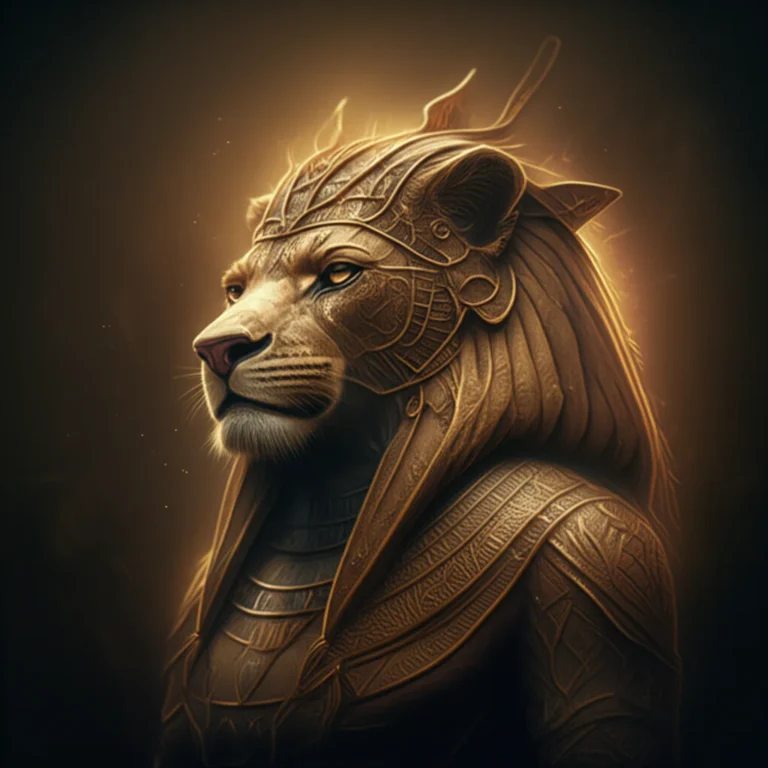Support our educational content for free when you purchase through links on our site. Learn more
Discover the Secrets of the Flor de la Mar Treasure: 10 Fascinating Facts You Didn’t Know! 🏴☠️
Have you ever wondered what treasures lie beneath the waves of the Strait of Malacca? The Flor de la Mar, a legendary Portuguese carrack, sank in 1511, carrying a fortune that has captivated treasure hunters and historians for centuries. With an estimated 60 tons of gold and 200 chests of gems, this ship’s story is not just about lost riches; it’s a tale of adventure, ambition, and the relentless quest for discovery. As we dive into the depths of its history, you’ll uncover the secrets of its fateful voyage, the treasure it carried, and the ongoing search that continues to this day.
Join us as we unravel the mysteries of the Flor de la Mar treasure, exploring its cultural impact and the myths that surround it. You might just find yourself inspired to embark on your own treasure hunt!
Key Takeaways
- Historical Significance: The Flor de la Mar represents a pivotal moment in the Age of Exploration, showcasing the ambitions of Portugal.
- Treasure Details: The ship carried an estimated 60 tons of gold and 200 chests of precious gems, making it one of the largest treasures ever lost at sea.
- Ongoing Search: Despite numerous expeditions, the wreck remains undiscovered, with modern technology offering new hope for treasure hunters.
- Cultural Impact: The Flor de la Mar has inspired literature, folklore, and even video games, cementing its place in popular culture.
If you’re intrigued by tales of lost treasures, check out our recommended books on the Flor de la Mar and other maritime mysteries:
- 👉 Shop Books on the Flor de la Mar:
Table of Contents
- Quick Tips and Facts
- The Enigmatic History of the Flor de la Mar Treasure
- The Legendary Voyage: How the Flor de la Mar Met Its Fate
- The Treasure Trove: What Was on Board the Flor de la Mar?
- The Great Treasure Hunt: Efforts to Recover the Flor de la Mar
- Modern Technology and the Search for the Flor de la Mar
- Cultural Impact: The Flor de la Mar in Literature and Folklore
- The Flor de la Mar: Myths, Legends, and Misconceptions
- Comparative Analysis: Other Famous Lost Treasures
- Key Takeaways: What We Can Learn from the Flor de la Mar
- Conclusion
- Recommended Links
- FAQ
- Reference Links
Quick Tips and Facts
-
What is the Flor de la Mar?
A 400-ton Portuguese carrack that sank in 1511, carrying a treasure trove for the King of Portugal. 🌊 -
Where did it sink?
Off the coast of Sumatra, Indonesia, during a storm. -
Treasure Details:
Estimated to include 60 tons of gold, 200 gem chests filled with diamonds, rubies, and emeralds. 💎 -
Historical Significance:
Considered one of the largest treasures ever lost at sea, with a legacy that continues to captivate treasure hunters and historians alike. -
Current Status:
The wreck remains undiscovered, with various claims of salvage rights from Portugal, Indonesia, and Malaysia. -
Cultural Impact:
The Flor de la Mar has inspired legends, literature, and even video games like Uncharted 4: A Thief’s End. 🎮
The Enigmatic History of the Flor de la Mar Treasure

The Flor de la Mar, meaning “Flower of the Sea,” was constructed in 1502 in Lisbon, Portugal, and was one of the finest vessels of its time. It was designed for the Carreira da Índia, the lucrative trade route to India. The ship measured approximately 36 meters (118.1 ft) in length and had a crew of around 500 sailors.
Key Historical Events
- 1502: Maiden voyage under Estevão da Gama.
- 1505-1511: Participated in several significant conquests, including Goa and Malacca.
- 1511: Sank on November 20, during a storm while transporting a vast treasure looted from the Sultan of Malacca’s palace.
The ship’s sinking was a catastrophic event, resulting in the loss of over 400 men and a treasure that has never been recovered. The aftermath left a legacy that continues to intrigue historians and treasure hunters alike.
The Legendary Voyage: How the Flor de la Mar Met Its Fate
The Flor de la Mar’s final voyage was marked by challenges. After successfully looting the Sultan of Malacca’s palace, the ship was laden with a massive treasure. However, as it sailed through the Strait of Malacca, it encountered treacherous weather conditions.
Timeline of Events
- November 20, 1511: The ship was caught in a storm, leading to its tragic sinking.
- Survivors: Afonso de Albuquerque, the ship’s commander, managed to survive using an improvised raft, but the treasure was lost to the depths.
This event not only marked the loss of a ship but also a treasure that has sparked numerous expeditions and theories about its whereabouts.
The Treasure Trove: What Was on Board the Flor de la Mar?
The treasure on board the Flor de la Mar was nothing short of legendary. Estimates suggest it included:
| Item | Estimated Quantity |
|---|---|
| Gold | 60 tons |
| Gem chests (diamonds, rubies, emeralds) | 200 chests |
| Other valuables | Personal items of Afonso de Albuquerque |
Notable Items
- Crown and sword of gold: Sent by the King of Siam to King D. Manuel.
- Bracelet of the Rajah of Sabandar: A personal treasure of Albuquerque, which he lamented losing.
The sheer scale of this treasure has led to comparisons with other famous lost treasures, making the Flor de la Mar a subject of fascination.
The Great Treasure Hunt: Efforts to Recover the Flor de la Mar
Since its sinking, numerous treasure hunters have attempted to locate the Flor de la Mar. Here are some notable efforts:
- Robert Marx (1992): Claimed to have located the wreck, calling it the “richest vessel ever lost at sea.”
- Rick Langrehr (2020): Found a silver Tanka coin near Diamond Point, but it was deemed inconclusive.
Challenges in Recovery
- Location: The exact site of the wreck remains unknown.
- Environmental Factors: Strong currents and underwater terrain complicate search efforts.
Despite these challenges, the allure of the treasure continues to inspire treasure seekers worldwide.
Modern Technology and the Search for the Flor de la Mar
With advancements in technology, the search for the Flor de la Mar has taken on new dimensions. Here are some innovative methods being used:
- Sonar Mapping: High-resolution sonar technology helps map the ocean floor, revealing potential wreck sites.
- Remote Operated Vehicles (ROVs): These underwater drones can explore depths that are otherwise inaccessible to divers.
Future Prospects
As technology continues to evolve, the hope of uncovering the Flor de la Mar’s treasure remains alive. The combination of historical research and modern technology may one day lead to its discovery.
Cultural Impact: The Flor de la Mar in Literature and Folklore
The Flor de la Mar has left an indelible mark on culture, inspiring stories, legends, and even video games. Its tale is woven into the fabric of maritime folklore, often depicted as a symbol of lost riches and adventure.
Notable Mentions
- Literature: The ship features in various historical accounts and fictional tales, emphasizing its legendary status.
- Video Games: The ship is referenced in Uncharted 4: A Thief’s End, showcasing its influence on modern storytelling.
The Flor de la Mar’s story continues to captivate audiences, reminding us of the mysteries that lie beneath the waves.
The Flor de la Mar: Myths, Legends, and Misconceptions
As with many historical treasures, the Flor de la Mar is surrounded by myths and misconceptions. Here are some common ones:
- Myth: The treasure was completely recovered shortly after the sinking.
- Fact: Most accounts suggest that the treasure remains lost, with only a few items salvaged.
Debunking Misconceptions
Understanding the true history of the Flor de la Mar helps separate fact from fiction. The ship’s legacy is not just about the treasure but also about the adventures and challenges faced by those who sailed her.
Comparative Analysis: Other Famous Lost Treasures
The Flor de la Mar is not alone in its legendary status. Here’s how it compares to other famous lost treasures:
| Treasure | Estimated Value | Status |
|---|---|---|
| Flor de la Mar | Unquantified | Lost |
| The Atocha | $400 million | Recovered |
| The Titanic’s treasure | $200 million | Partially recovered |
Insights
While the Flor de la Mar’s treasure remains undiscovered, other treasures have been successfully recovered, showcasing the varying fates of lost riches throughout history.
Key Takeaways: What We Can Learn from the Flor de la Mar
The story of the Flor de la Mar teaches us valuable lessons about history, adventure, and the relentless pursuit of treasure. Here are some key takeaways:
- Historical Significance: The ship represents a pivotal moment in maritime history.
- Cultural Legacy: Its tale continues to inspire stories and adventures.
- Enduring Mystery: The search for the treasure reminds us of the mysteries that still lie beneath the ocean.
The Flor de la Mar is more than just a lost treasure; it’s a symbol of exploration, ambition, and the human spirit’s desire to uncover the unknown.
Conclusion

The tale of the Flor de la Mar is a captivating blend of adventure, tragedy, and mystery that transcends time. From its construction in 1502 to its fateful sinking in 1511, this legendary ship has left an indelible mark on maritime history. While the treasure it carried remains lost beneath the waves, the stories surrounding it continue to inspire treasure hunters and historians alike.
Summary of Positives and Negatives
Positives:
- Historical Significance: Represents a pivotal moment in the age of exploration.
- Cultural Impact: Continues to influence literature, folklore, and popular culture.
- Enduring Mystery: The ongoing search for the treasure keeps the story alive and relevant.
Negatives:
- Uncertain Fate: The treasure remains undiscovered, leading to speculation and myths.
- Challenges in Recovery: Environmental factors and the ship’s unknown location complicate search efforts.
In conclusion, the Flor de la Mar is not just a lost ship; it’s a symbol of human ambition and the quest for knowledge. We highly recommend diving into this fascinating story, whether through books, documentaries, or treasure-hunting expeditions. The allure of the unknown is what makes history so captivating! 🌊✨
Recommended Links
- 👉 Shop Books on the Flor de la Mar:
FAQ

What is the historical significance of the Flor de la Mar treasure in the context of maritime history?
The Flor de la Mar is significant as it represents the peak of Portuguese maritime power during the Age of Exploration. It was part of the lucrative spice trade, which was crucial for European economies. Its sinking marked not only the loss of a ship but also a substantial economic blow to Portugal, as it was transporting a vast treasure meant for the crown.
Where is the Flor de la Mar shipwreck believed to be located, and what efforts have been made to find it?
The shipwreck is believed to be located off the coast of Sumatra, Indonesia. Numerous expeditions have attempted to locate it, including those led by treasure hunters like Robert Marx and Rick Langrehr. Despite these efforts, the exact location remains a mystery, with environmental factors and the vastness of the ocean complicating recovery attempts.
What is the estimated value of the treasure that the Flor de la Mar is thought to have been carrying when it sank?
The treasure is estimated to have included 60 tons of gold and 200 chests of gems, making it one of the largest treasures ever lost at sea. While exact monetary values are hard to determine due to fluctuations in gold and gem prices, it is believed to be worth hundreds of millions of dollars in today’s market.
What are some of the legends and myths surrounding the Flor de la Mar treasure, and how have they evolved over time?
Legends surrounding the Flor de la Mar often depict it as a cursed ship, with tales of ghostly apparitions and lost riches. Over time, these stories have evolved, with some claiming that the treasure was recovered shortly after the sinking, while others suggest it remains buried under sediment or lost to the sea. These myths have contributed to the ship’s enduring allure.
How does the story of the Flor de la Mar treasure fit into the broader narrative of Portuguese exploration and colonization?
The Flor de la Mar’s story is intertwined with the broader narrative of Portuguese exploration, which was driven by the desire for trade routes and wealth. The ship’s voyages contributed to the establishment of Portuguese dominance in the spice trade and the colonization of various regions in Asia, highlighting the economic motivations behind exploration.
What role did the Flor de la Mar play in the spice trade, and how did its sinking impact the global economy of the time?
The Flor de la Mar was integral to the spice trade, transporting valuable goods from Asia to Europe. Its sinking represented a significant loss of wealth for Portugal, impacting the supply of spices and other goods in Europe. This event underscored the risks associated with maritime trade during this era.
Are there any ongoing expeditions or research projects focused on finding and recovering the Flor de la Mar treasure, and what are their chances of success?
Yes, there are ongoing expeditions and research projects aimed at locating the Flor de la Mar. While some treasure hunters continue to search, the challenges of locating the wreck and the vastness of the ocean make success uncertain. However, advancements in technology, such as sonar mapping and ROVs, may improve the chances of finding the treasure in the future.
Reference Links
- Wikipedia: Flor de la Mar
- Heritage Daily: The Lost Treasure Ship
- Areas Grey: The Flower of the Sea
- History Hidden: Pirate Legends
The story of the Flor de la Mar is a testament to the enduring allure of lost treasures and the mysteries of our maritime past. 🌊✨




